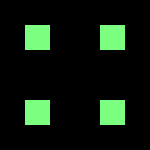The five finalists were recommended by a judging panel and were each awarded $5,000 and in-kind prizes. During Phase 2, which ran from January to May 2021, the finalists received access to expert mentorship and additional virtual resources as they built CubeSat prototypes and conducted flight events to launch their prototypes.
Finalists
Anderson Clark Magnet High School studied whether local encampments are in high-risk wildfire areas, with the goal of helping the local fire department to save lives of people without housing.
CTE Team Lead
Dominique Evans-Bye, CTE GIS & Remote Sensing Teacher
Freeport High School measured Earth’s surface temperature to study the differences in heat absorption and retention between urban and rural areas.
CTE Team Lead
Richard Johnson, Business & Technology Lead Teacher, CTE Coordinator
Mooresville High School measured the effect of their town’s population growth on air quality, land use, and temperature.
CTE Team Lead
Renee Parkman, Engineering, Drafting & Computer CTE Teacher
Opelika High School collaborated with Columbus High School and Northside High School (Columbus, Georgia). The team collected performance data for a new type of core material used in NASA-grade fluxgate magnetometers, which are used to study Earth’s changing magnetic field.
CTE Team Lead
Brenda Howell, Engineering & Robotics Teacher
Princeton High School collaborated with Montgomery High School (Skillman, New Jersey). The team optimized space missions by examining topics such as atmospheric pressure density and habitable planetary environments.
CTE Team Lead
Joseph Gargione, Industrial Arts & Technology Teacher






